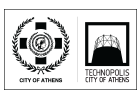
Winds, Croissants and Tsunamis: A Tour of the Explosive Sun
Angelos Vourlidas
Solar Section Supervisor, SRP/SES, The Johns Hopkins University Applied Physics Laboratory
For most people, the Sun is just a large yellow ball that does not change daily, except by the occasional appearance of sunspots. However, the Sun is anything but boring! Its atmosphere, the so-called corona, is filled with beautiful yet complex structures in continual evolution. Unfortunately, the coronal is visible from the ground only during eclipses, and then only for a few minutes, so it remains a mystery to the public.The last 20 years, thanks to a series of specialized space missions, we have acquired a new appreciation for the coronal activity and respect for its influence on the terrestrial environment. We have learned that the solar corona is the activity center of the Sun where continual flares and explosions release huge amounts of energy, mass, and radiation into the solar wind. What happens when they encounter out planet? Their collision with Earth can have serious consequences for satellites, for polar flights, and for power grids in high latitudes. In analogy to the terrestrial weather, the aforementioned phenomena are called “space weather” and their solar drivers are called “solar tsunamis”. The talk will expose the beauty and explosivity of the solar corona using images and movies from the recent NASA solar missions and briefly introduce the many, but maybe surprising, ways that the corona can influence our daily lives.
Angelos Vourlidas graduated from the Physics Department of the Aristotelion University of Thessaloniki in 1989. He continued his postgraduate studies in the U.S.A where he obtained his PhD in Physics with specialization in solar radioastronomy in 1996. After working for a year at Caltech, he was hired by the U.S. Naval Research Laboratory to work on the analysis of solar activity via space observations and on the design of telescopes for space applications. Since November 2014, Dr. Vourlidas is leading the Solar Section of the Johns Hopkins Universiry Applied Physics Laboratory. Dr. Vourlidas specializes in the science management of space projects as Project Scientist of two sounding rocket (VAULT, VERIS) and four space investigations (LASCO, SECCHI, SOLOHI, and WISPR). His research focuses on coronal activity and in particular on Coronal Mass Ejections and their influence on the terrestrial environment (Space Weather). Dr. Vourlidas has published over 183 papers in peer-reviewed journals with more than 6000 citations. He participates, as invited speaker or organizer, in many international meetings annually and is frequently called on NASA panels. He is a strong advocate of the Greek participation in ESA space projects and is happy to help students who want to be incvolved in space applications.





